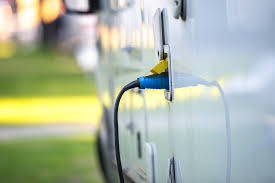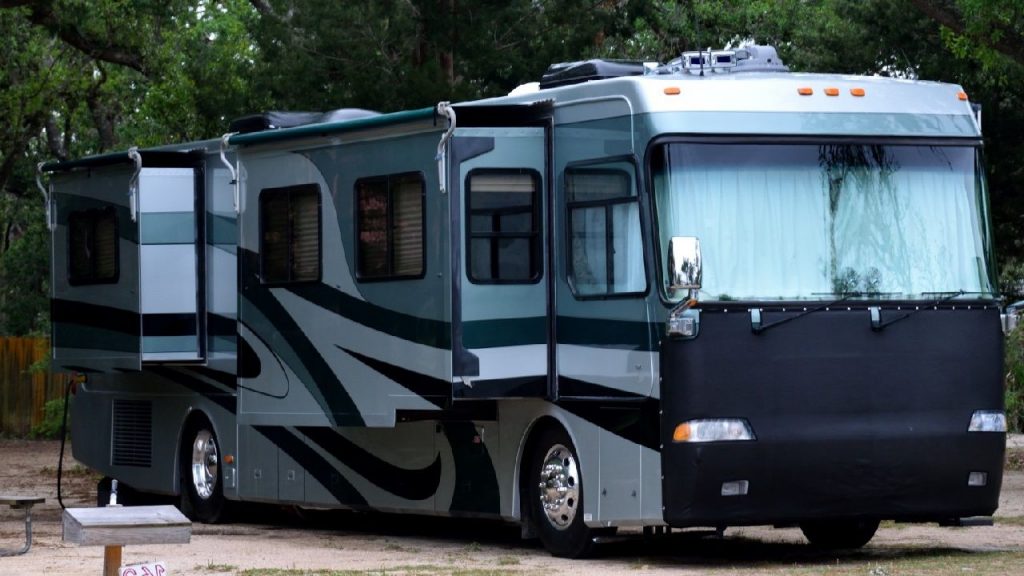A recreational vehicle, RV, gives you the freedom to travel without ever needing to worry about accommodation. An RV also allows you to explore areas off the beaten path, making it easier to visit non-urban sites and remote campsites.
If you want to enjoy this kind of freedom, you may be thinking of purchasing or renting your motorhome. Before you do, it’s essential to educate yourself about how these vehicles work. The RV battery is one of the critical components you should know about.
For example, a standard RV battery should supply 12 volts of power. Without a functional 12v DC house battery as a power source, the vehicle will lose key functionality. An RV battery powers vital features like a water pump, small appliances, and lights.
While some RV batteries have a built-in charging system, many only perform best when plugged into a charging station, such as at an RV park. It’s thus essential to track your RV battery’s life.
 Source: rvshare.com
Source: rvshare.com
Things to Know About RV Battery
There are two types of RV batteries. Starting batteries, also called chassis batteries, are used to start and run the engine. House batteries are used to power other functions, as described in the introduction.
House batteries must be deep cycle batteries, which tend to have thicker plates and have greater reserve capacity. Deep cycle batteries can be flooded-lead acid or valve-regulated lead-acid. In either case, such lead-acid batteries don’t actively create electricity but store it.
A lead-acid battery is made of lead and lead oxide plates submerged in an electrolyte solution. The amount of charge the battery can store will depend on the lead plates’ size and the amount of electrolyte solution.
Properly maintaining your RV battery will extend the life cycle and ensure maximum efficiency.
To maintain your battery and keep it working at optimal levels, aim to keep it charged above 80% at all times. This helps prevent sulfation, the leading cause of premature battery death.
How to Prevent the Batteries From Being Static
Investing in a good-quality RV battery is the first step in ensuring reliability and a lasting lifespan. Check online reviews to find a top-quality product that will stand the test of time.
Beyond investing in a quality product, here are a few things you can do to keep your battery from needlessly draining and to extend its lifespan generally. When you’re on the road, the last thing you want is to deal with a static battery, which will no longer charge properly.
- Unplug appliances that may use power even when not in use. Examples include television or stereo. Even if it’s not on, some energy is needed to power the digital clock, for example. These are known as parasitic loads.
- Beware of hot temperatures, which can cause batteries to drain the power more quickly. Don’t park your RV in the blazing sun, especially on days warmer than 75 degrees Fahrenheit.
- Check and ensure that the disconnect switch is off to prevent discharge. Otherwise, parasitic loads (e.g., TV, stereo) will cause the battery to discharge.
- Leave the vent caps on when the battery is charging to prevent water loss from creating damaging bubbles.
- Check the battery’s electrolyte levels and add distilled water to lead-acid batteries if needed.
- Even if the battery is in storage, monitor it regularly. You may need to recharge it on occasion, even if it’s not in regular use.
How? Charge your battery in stages. A bulk charge should only return the battery to 90% of its full charging capacity. Then, use an absorption charge to top off the remaining 10%.
Finally, never let the battery discharge below 12v. Reducing the discharge depths will extend the battery's lifespan.
 Source:batterychargerslab.com
Source:batterychargerslab.com
How to Charge an RV Battery?
You have a few options when it comes to charging an RV battery. The four main routes are a 30 and 50 amp hookup ("shore power"), an alternator, a generator, or solar power. Read on for details about each method and its pros and cons.
An RV generally has a 30- or 50-amp hookup powered via a standard electrical grid. This is also known as shore power. When the RV is connected to shore power, the battery will automatically charge. This method allows for a fully charged battery. The benefit is that the process is automatic. The drawback is that you have to keep an eye out to avoid overcharging.
Another option is to charge the battery via the RV's alternator. This converts mechanical into electrical energy (the engine starts, and a belt rotates the alternator). This is ideal for long road trips but not good if you stay in one place for a long time because it's inefficient and not great for the engine. You can theoretically fully charge the battery this way.
You can also charge your RV battery via a generator. A typical mobile generator with a 12v output will bring a 100 amp-hour battery to half its charge life in about six hours. While this is a convenient portable method, if you don't have shore power at hand, it takes a long time. Also, you won't be able to charge the battery fully. It may reach about 70%.
It's also possible to install solar panels on your RV and then charge the battery using a solar trickle charger. Depending on the panels' size (and the weather), you can fully charge your battery this way. This is an excellent option if you're in an area with a lot of sunshine. Plus, it's eco-conscious.
The Short Answer: Does an RV Battery Charge When Plugged In?
Whenever the RV is plugged in, the house battery is being charged. Since you frequently plug in your motorhome, it's essential to maintain and check the battery regularly. The above guidelines can help you maintain your RV battery and ensure maximum lasting efficiency.




